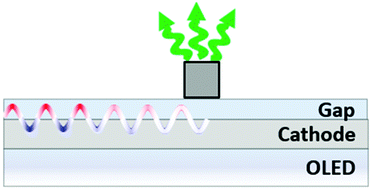Plasmonic PHOLEDs: increasing OLED stability
Abstract
This paper introduces a novel organic light emitting device that intentionally couples phosphorescent emitters to the surface plasmon mode of the metal cathode. A ∼2× decay rate enhancement is observed, resulting in a ∼50% increase in constant current density device stability. A nanoparticle-based plasmon out-coupling scheme efficiently converts the energy in the cathode to photons in free space and results in a doubling of the operational device stability at fixed initial brightness. These gains are achieved independent of materials design.

- This article is part of the themed collection: Special issue in memoriam of Alasdair James Campbell


 Please wait while we load your content...
Please wait while we load your content...